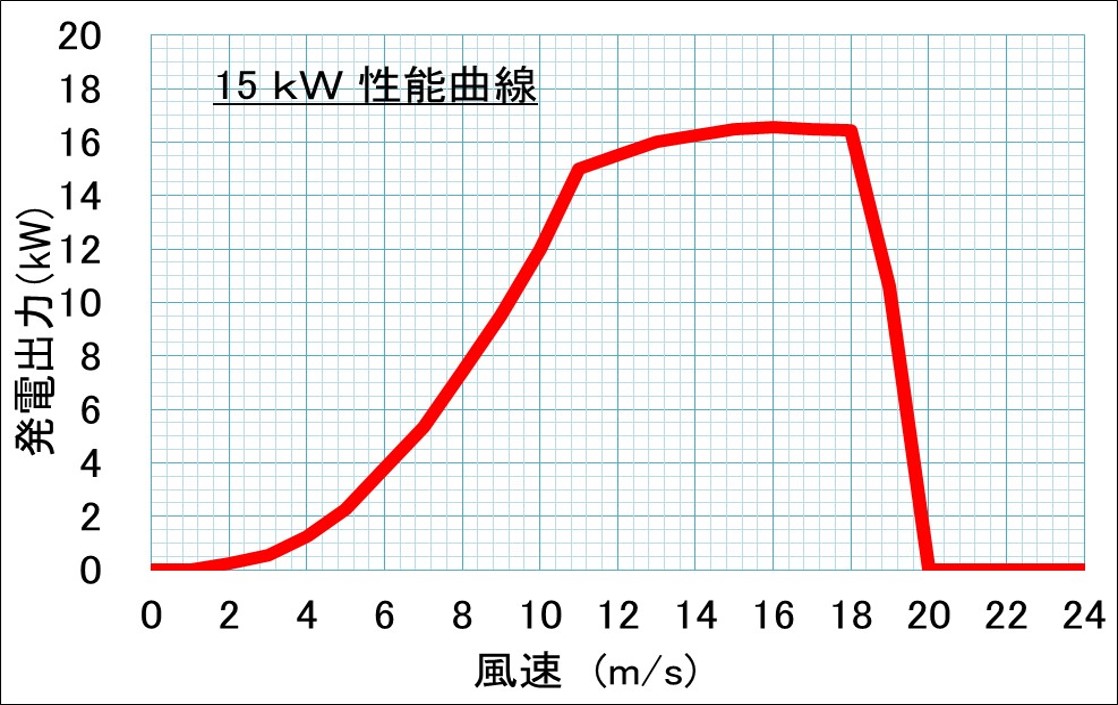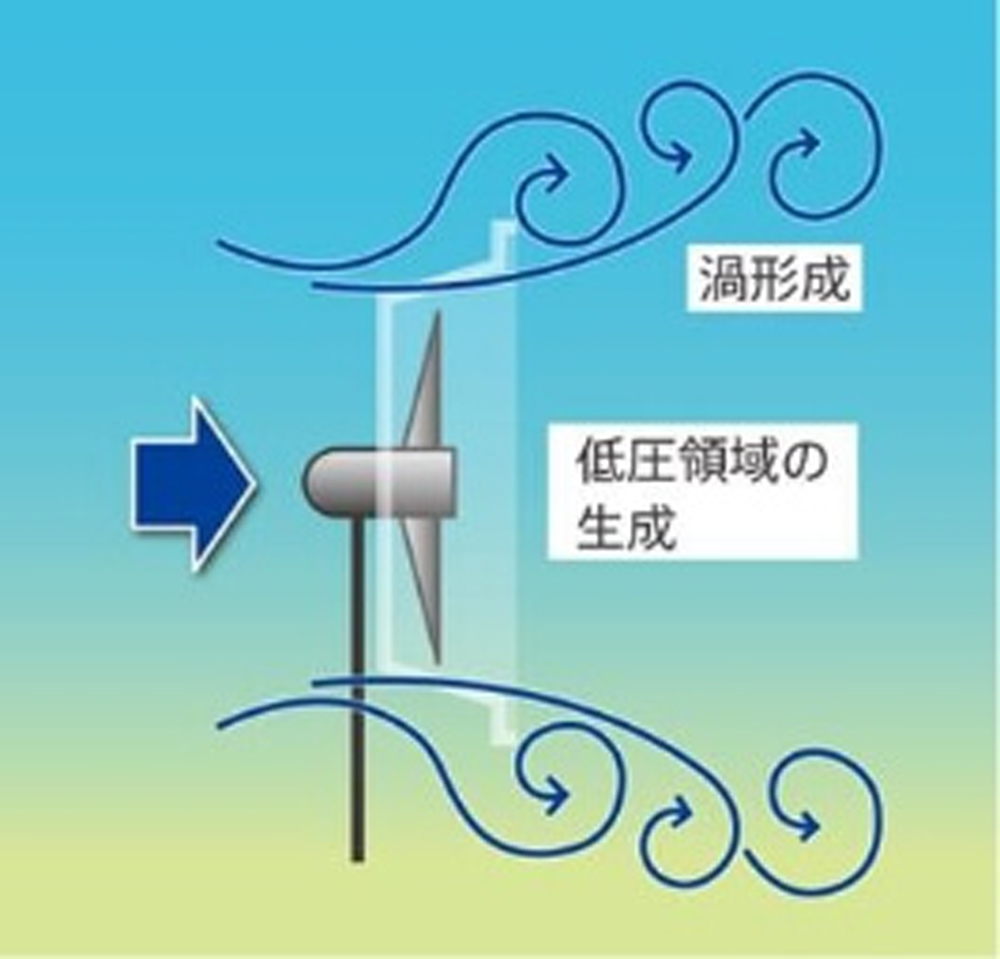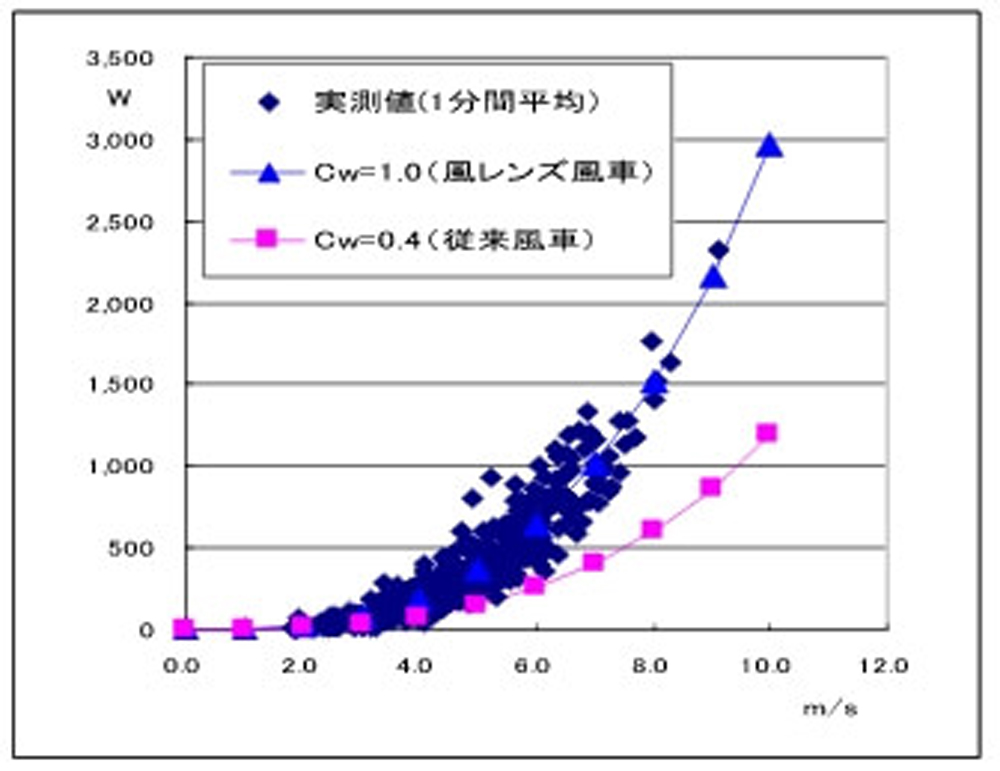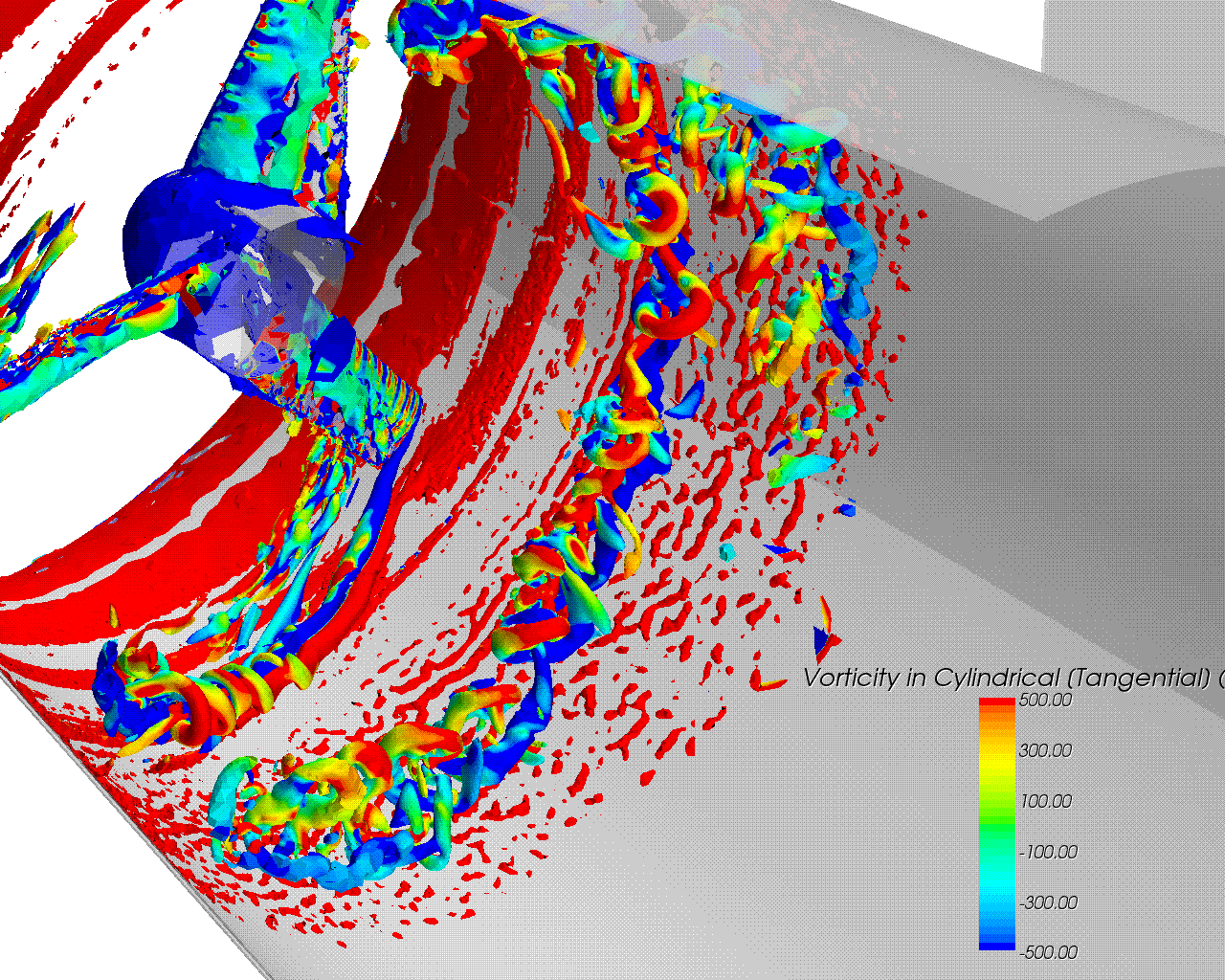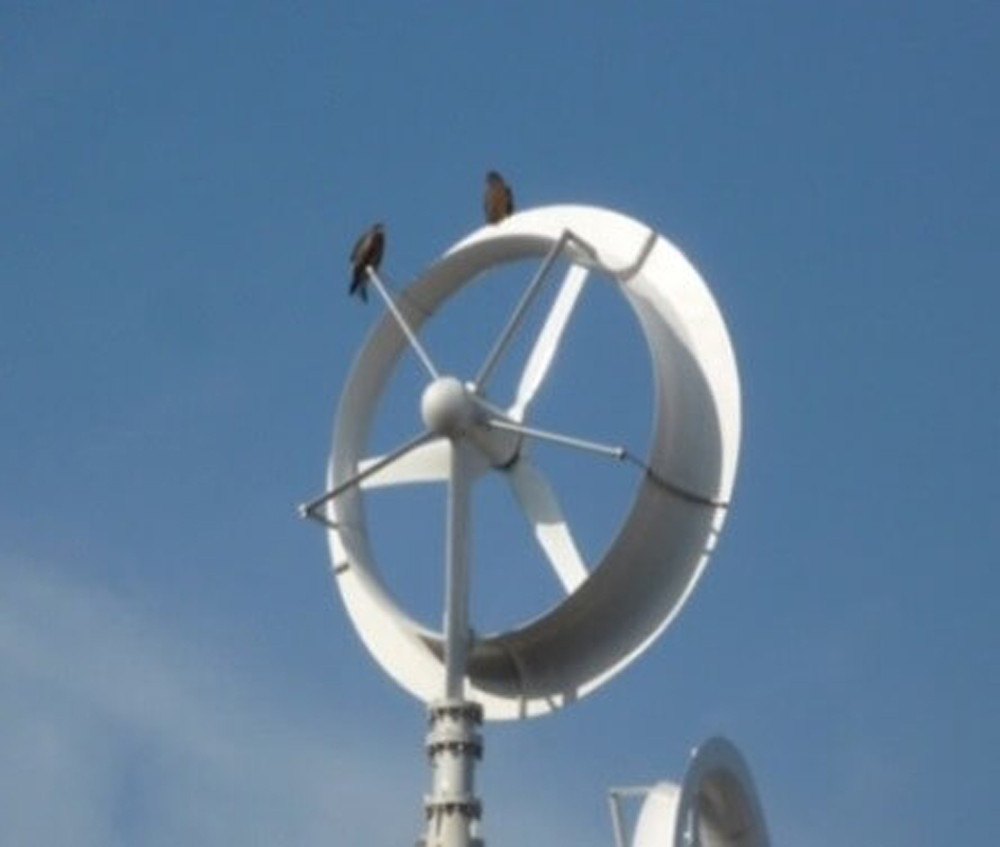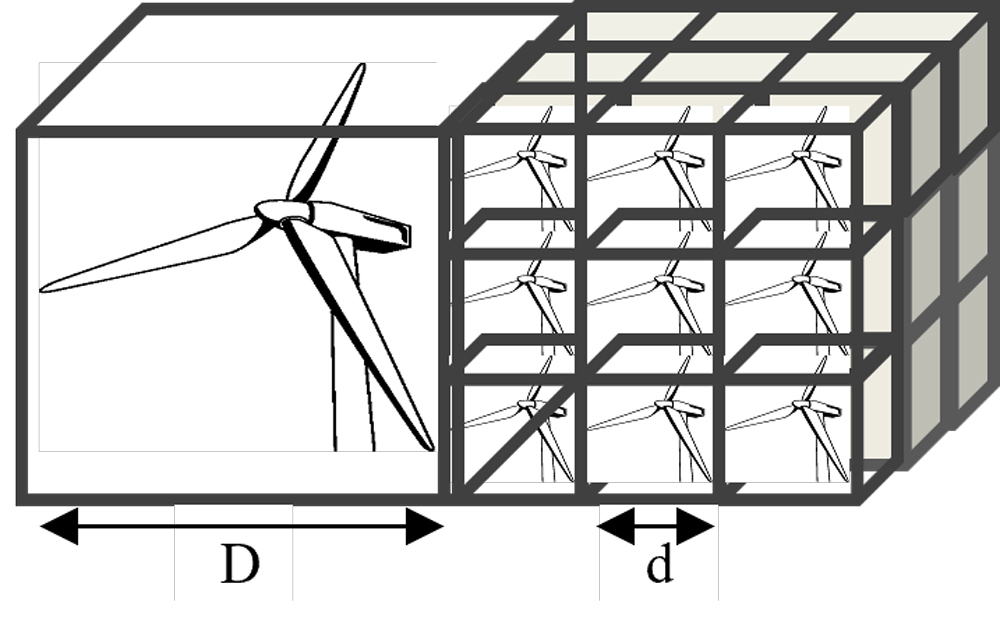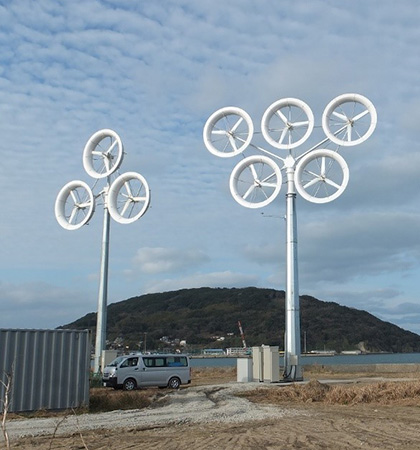15kW multi-lens wind turbine
Outline of 15kW lens wind turbine
This is a multi-rotor type 15kW lens wind turbine with 5 rings. 3 rings increase the overall output by 10% and 5 rings by 20%.
A 15kW wind turbine was introduced in the coastal area of Karatsu City in January 2020.
■Independent system: Outputs 48V DC or 96V DC to store electricity in storage batteries.
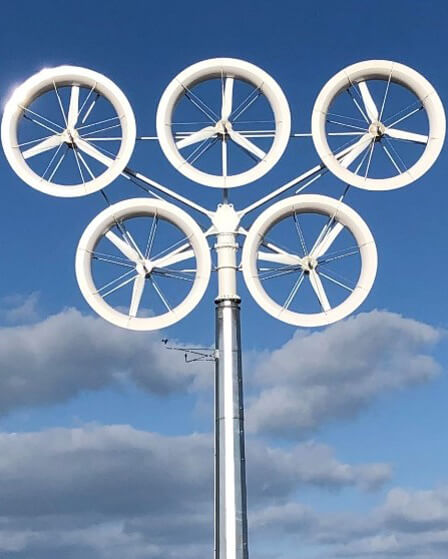
Specifications of 15kW lens wind turbine
| Rated output (Rated wind speed) | 18m/s |
|---|---|
| rotor diameter | Each unit 2.78m |
| Wind collection lens outer diameter | Multi windmill width 12.0m (unit 3.64m) |
| Diffuser (Wind collecting lens) | Each unit Cii type, brim height 7.5% |
| Wind turbine system center height* | 15.0m (arbitrary) (center of gravity of 5 units) |
| Wind collecting lens upper edge height* | 18.0m (optional) |
| Wind turbine body weight | 3500kg |
| wind turbine format | With air collector/horizontal axis/downwind |
| blade | 15 sheets (3 sheets each), fixed pitch, CFRP |
| Generator | Coreless multi-pole synchronous generator, outer rotor type (rated speed 400rpm) |
| Yaw system | passive |
| break | short circuit brake |
| manual stop | Possible (lever type switch) |
| Cut-in wind speed | 3m/s |
| cutout wind speed | 16m/s |
| wind resistance | 52,5m/s (Class III) |
| For independent power supply** | 48V/96V |
| tower | steel pipe monopole |
*Center height is the triangle center of gravity with 3 nacelles. The height of the tower changes depending on the installation method.
**Charge controller (optional) can be used to switch from grid to battery storage in case of emergency
Features of the lens windmill (basic unit)
High efficiency
The Karman vortex generated by the "brim" of the diffuser with a brim creates a low-pressure area behind the diffuser, and this low-pressure area attracts wind. The accelerated wind increases 1.5 times at the blade tips and turns the wind turbine. Since wind energy is proportional to the cube of the wind speed, a wind turbine with the same rotor diameter can generate about 2 to 3 times as much power. The "lens wind turbine," which was optimized through a series of joint research efforts, is patented by Kyushu University, and we have obtained an exclusive license.
quietness
The blade tip vortices generated at the blade tips and the opposite-direction vortices induced by the diffuser's inner wall cancel each other out as they move downstream, suppressing the blade tip vortices that are the source of aerodynamic noise and significantly reducing the noise level. Noise measurements of a 3kW turbine showed a sound pressure level of less than 55dB near the wind turbine at wind speeds of 5 to 14m/s. The noise level is not noticeable even in residential areas. Noise is not a concern even in the vicinity of residential areas.
A wingtip vortex (blue) induces opposing vortices (red) on the inner wall of the ring (lens), which cancel each other out. The source of aerodynamic noise disappears.
bird strike
Diffusers (rings) are clearly visible to birds. "Bird strike", a collision between a bird and a blade, which is considered one of the major problems of wind power generation, has been confirmed to be less likely to occur. We have never experienced one until now.
scenery
Unlike conventional windmills, which have sharp-edged blades rotating at high speed, the soft image of the "ring" of the diffuser that surrounds the blades does not spoil the scenery, and it is easy to blend in with the surrounding scenery.
Features of the multi-lens wind turbine
It is expected that the wind turbine weight, introduction cost, and power generation cost will decrease in proportion to 1/√n. The wind collection effect of the lens and the fluid interference effect of the multi are combined, and the power generation amount is further increased by 10 to 20%. It has high potential as a wind turbine system, and we are conducting research toward its use as a 7-wheel multi-lens wind turbine and an offshore wind power system.
Single wind turbine and multi wind turbine with the same area and same rating, that is, assuming the same power output (D2 = n d2)
| single rotor | multi rotor | |
|---|---|---|
| Number of rotors | 1 | n |
| rotor diameter | D | d |
| Total power generation | ∝D2 | ∝n・d2 |
| total wind turbine mass | ∝D3 | ∝n・d3∝D3/√n |
| total wind turbine cost | ∝D3 | ∝n・d3∝D3/√n |
| power generation cost | ∝D | ∝d∝D/√n |
Multi-lens wind turbine patented by our company (April 21, 2017)
Patent No. 6128575 US patent October 2018
Expected power generation (3kW basic unit and 15kW multi)
Actual annual power generation depends on installation conditions (surrounding topography, weather conditions, etc.). Based on our wind turbine power generation output curve and the annual average wind speed, we assumed the appearance of general wind (Weibull distribution or Rayleigh distribution), and calculated the power generation amount when connected to the grid in the table below. Considering the operation rate of the wind turbine system and the self-consumption of the controller, etc., the estimated power generation amount is shown as a reference annual power generation amount. (Note: The capacity factor is based on our field test data. The two-year demonstration test from April 2016 to January 2018 in Hibikinada, Kitakyushu City)
| Annual average wind speed | capacity factor | 3kW lens wind turbine | 15kW lens wind turbine |
|---|---|---|---|
| 3.0m/s | 6.0% | 1,570kWh | 7,850kWh |
| 4.0m/s | 12.0% | 3,150kWh | 14,750kWh |
| 5.0m/s | 20.0% | 5,250kWh | 26,250kWh |
| 6.0m/s | 28.0% | 7,350kWh | 36,750kWh |
| 7.0m/s | 35.0% | 9,190kWh | 45,950kWh |


